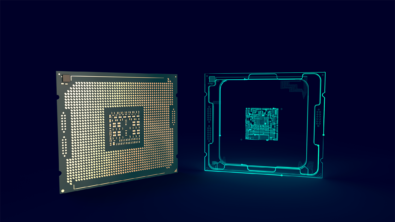Reshaping the IC validation and characterization industry with AI

Microchips are some of, if not the most, complex devices ever created by human hands. Billions upon billions of microscopic components ordered into precise structures all in a package that fits easily in the palm of your hand. However, designing something so complex is far from an easy task. That is why companies turn to tools like Solido which use machine learning (ML) to help characterize and verify the different elements of a chip before ever sending a design to be manufactured.
In a recent podcast, I spoke with Amit Gupta, serial entrepreneur and founder of Solido Design Automation before its acquisition by Siemens EDA in 2017 about the work he’s done to integrate AI and ML into the IC characterization process and why that was so important in getting the industry where it is today. I’ve highlighted a few of the most interesting topics we talked about below.
Challenge of verifying ever-shrinking transistors
Over the last 20 years the size of transistors has dropped from 100nm or more down to as little as 3nm with companies continuing to push the boundary even smaller. With these smaller sizes come more complex features and denser chips where brute-force verification methods could take years to run, making them impractical for real use.
However, these massive structures and large numbers of simulations do generate a lot of data, making it an ideal space to apply AI – which is exactly the opportunity Amit saw back in 2005. The combination of rich datasets and impossibly large to work with designs meant that applying AI/ML to the problem, even a decade before it became mainstream in other industries, was a requirement that naturally arose as designs grew larger and more complex.
Going from weeks to hours for library characterization
Solido is a powerful tool used for library characterization, a vital step in the modern IC design process which involves examining or characterizing the properties of a specific blocks of circuitry for speed and power consumption. These characterized circuit blocks are bundled into libraries which are then used in new designs at which point they must be rigorously verified.
This verification process, which requires running enough simulations to achieve as low as a one-in-a-billion failure rate is where machine learning can really shine. Taking a conventional approach to this problem would involve weeks of running monte carlo analysis with billions of simulations to brute-force the answer with the required accuracy. However, thanks to the power of ML, this can be reduced from billions down to just a few thousand without losing the, as Amit calls it, “brute force accuracy” the industry demands.
Amit goes on to explain how they use a selection of simulations to train an ML model which can then focus and guide further simulations without retesting areas which have already been validated. This cuts down drastically on the number of simulations that provide little to no meaningful information about possible failures. The final result of applying ML to this process? Up to a 1,000,000x speed up in run times – an incredible achievement that, for modern chips, is not just nice to have but is essential.
Trusted AI Solution
Compared to many other types of software which are integrating AI/ML solutions today, Solido has attained greater adoption and trust within its industry. While in part this can be attributed to relying on ML-driven tools being a necessity, Amit also notes that for Solido to build trust they focused heavily on attaining the same or better accuracy then brute-force methods while also remining transparent.
By keeping a degree of transparency into how the ML system is converging to its solutions, picking parameters, etc. it becomes easier for experts using the tools understand and justify why an AI approved design is trustworthy. This is especially vital given the incredibly high and rising costs of taking a design from the drafting table into real silicon.
In many ways, Solido represents the future of what AI in professional software will look like as well as a roadmap on how to get there. By taking advantage of the massive amount of data available in the EDA space, Amit and his team were able to develop powerful and accurate AI/ML systems back when AI was still largely a dream for many. Over the years this software has gone on to become a key part of the chip design industry and is trusted by companies all over the world, showing how in time AI will play an increasingly important roles in software across countless industries, with advanced tools like Solido paving the way.
Siemens Digital Industries Software helps organizations of all sizes digitally transform using software, hardware and services from the Siemens Xcelerator business platform. Siemens’ software and the comprehensive digital twin enable companies to optimize their design, engineering and manufacturing processes to turn today’s ideas into the sustainable products of the future. From chips to entire systems, from product to process, across all industries. Siemens Digital Industries Software – Accelerating transformation.


